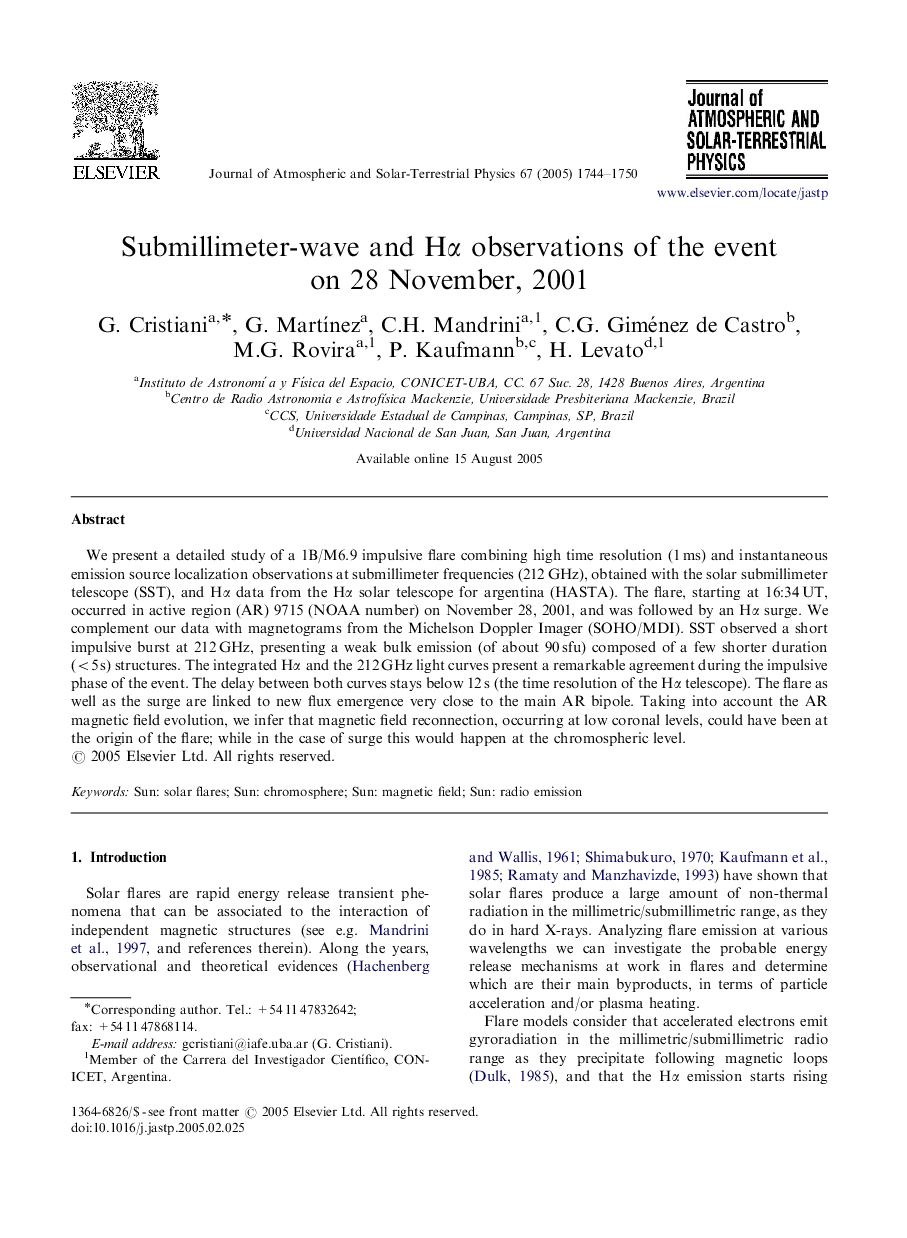| Article ID | Journal | Published Year | Pages | File Type |
|---|---|---|---|---|
| 9827677 | Journal of Atmospheric and Solar-Terrestrial Physics | 2005 | 7 Pages |
Abstract
We present a detailed study of a 1B/M6.9 impulsive flare combining high time resolution (1 ms) and instantaneous emission source localization observations at submillimeter frequencies (212 GHz), obtained with the solar submillimeter telescope (SST), and Hα data from the Hα solar telescope for argentina (HASTA). The flare, starting at 16:34 UT, occurred in active region (AR) 9715 (NOAA number) on November 28, 2001, and was followed by an Hα surge. We complement our data with magnetograms from the Michelson Doppler Imager (SOHO/MDI). SST observed a short impulsive burst at 212 GHz, presenting a weak bulk emission (of about 90 sfu) composed of a few shorter duration (<5s) structures. The integrated Hα and the 212 GHz light curves present a remarkable agreement during the impulsive phase of the event. The delay between both curves stays below 12 s (the time resolution of the Hα telescope). The flare as well as the surge are linked to new flux emergence very close to the main AR bipole. Taking into account the AR magnetic field evolution, we infer that magnetic field reconnection, occurring at low coronal levels, could have been at the origin of the flare; while in the case of surge this would happen at the chromospheric level.
Keywords
Related Topics
Physical Sciences and Engineering
Earth and Planetary Sciences
Geophysics
Authors
G. Cristiani, G. MartÃnez, C.H. Mandrini, C.G. Giménez de Castro, M.G. Rovira, P. Kaufmann, H. Levato,
